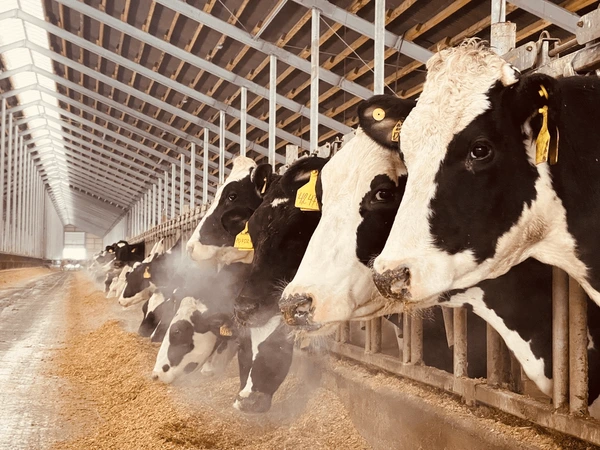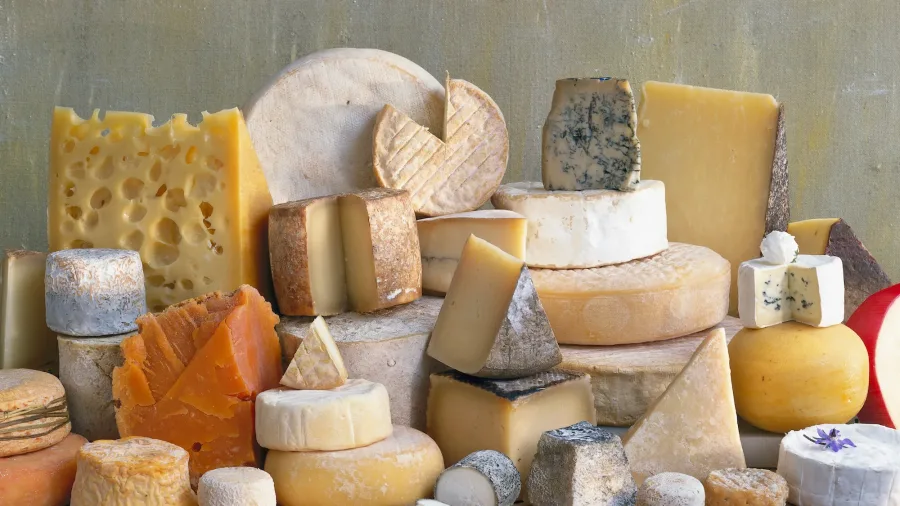Delve into October 2024 dairy futures: milk, feed, and margins. How will EU and U.S. market changes affect your farm’s profit? Find insights here.
Summary:
October 17, 2024, dairy futures highlight the complexities and changing landscape facing dairy farmers due to milk production fluctuations, feed costs, and market margins. With German and Dutch statistics affecting EU27+UK totals, the industry experiences unpredictable shifts, notably a dip in German output and a surge of Dutch cheese exports to emerging markets. Across the Atlantic, the volatile nature of U.S. and EU dairy product prices—marked by early-week declines and end-of-week rallies—reflects the urgent need for strategic margin management. Embracing data accuracy, understanding market realities, and leveraging strategic opportunities are vital for adapting to these dynamics. By challenging statistics’ credibility and preparing for market roller coasters in cheese, butter, and powder, industry players can pivot towards stockpiling strategies, possibly augmenting profits. In managing margins, milk prices and feed costs remain critical. Dairy producers could benefit by staying informed through educational workshops and financial tools and engaging in industry forums, bolstering financial literacy and market analysis acumen.
Key Takeaways:
- EU27+UK milk production shows a slight decrease, with Germany significantly impacting regional aggregates due to lower outputs.
- Dutch cheese exports are booming, particularly to unconventional markets like Vietnam and Bangladesh.
- U.S. and EU cheese and butter prices faced a downturn but found some recovery opportunities by the week’s end.
- Lactose and whey prices in the U.S. experienced an upward trend, indicating potential margin management challenges for dairy farmers.
- The dairy futures market displayed volatility but suggested stabilization towards the week’s conclusion.

As October 2024 approaches, the dairy farming scene is evolving and speeding. Understanding milk, feed, and margin futures is advantageous and critical for guiding your firm to success. Current market dynamics indicate a season of volatility and opportunity, with output falling in critical locations such as the EU27+UK and mixed market signals. Dairy producers must be proactive in staying informed to navigate these unknown seas; ‘the more informed you are about market trends, the better equipped you’ll be to maximize your margins.’ This month provides a delicate balancing act in which every action is essential, from feed purchases to comprehending export statistics. Are you ready to navigate this financial maelstrom?
What’s Stirring in the EU27+UK Dairy Corridor?
Let’s examine what’s heating the EU27+UK dairy scenario. You’ve undoubtedly seen a ripple across the pond regarding milk production patterns. According to Eurostat, German manufacturing unexpectedly fell by 5.4% in August. You may be wondering what this means for you.
This is when things get interesting. When a major player, such as Germany, coughs, the market suffers. As output declines, supply dynamics alter, possibly impacting everything from farmgate pricing to export choices. Now, hold that thinking. Consider how dependent we have become on enormous databases like Eurostat for our daily bread—err, milk. Can we always believe these numbers at face value?
Accuracy in data interpretation is more than just a sophisticated journalistic issue. In the dairy industry, this translates into making sound business choices. Mistakes here result in missing market indications and, eventually, possible losses. You must go deeper into the data sources while analyzing the market.
While this may seem dull, market positioning is all about perception. If German manufacturing patterns determine the future, isn’t it more important to understand what’s going on than to rely solely on statistics? In essence, keeping ahead requires a suspicious mindset. Each percentage decline is more than just a figure; it reflects market reality. As intimidating as it may seem, challenging data accuracy is part of protecting margins.
Unpacking the Dutch Dilemma: Is Cheese Leading a New Export Trajectory?
Despite the general stability of EU27+UK milk equivalent exports, which climbed by just 0.1% year on year in August, it is critical to dig deeper. The tale is based on unusual statistics from nations such as the Netherlands.
Consider the massive increase in Dutch cheese exports, with amounts flowing to unexpected locations such as Vietnam, Colombia, Chile, and Bangladesh. What is behind this abrupt export surge? Is it a purposeful market expansion or a response to changing demand patterns?
Such atypical export dynamics demand critical reflection on global market perspectives. For starters, they may raise concerns about the credibility of Eurostat statistics, implying possible anomalies or data reporting errors. As traders and market experts worldwide, we need to discuss whether these data correctly represent market reality or are only a blip.
Furthermore, inconsistencies in the presented data influence market expectations and price volatility. If the actual statistics diverge significantly, markets will respond with more volatility or excessive caution. As a result, these export data are significant for the EU27+UK area and worldwide, impacting dairy market patterns.
The Dairy Market Roller Coaster: Navigating Cheese, Butter, and Powder Fluctuations
The recent roller coaster in the cheese, butter, and powder markets warrants a closer study. Prices began the week in the United States and the European Union. However, the markets found support at the close of the week. What may be causing the fluctuations? It could be a combination of supply challenges and shifting demand environments.
For cheese, end customers rushing for year-end coverage may buffer the decline. When cheese prices fall from their highs, you may question how this impacts your business. If prices stabilize, expanding cheese output may be in the future, providing a lifeline to margins that are being squeezed at every step. These fluctuations could be due to supply challenges such as weather-related disruptions or shifting demand environments like changes in consumer preferences or dietary trends.
Butter prices fell first in the United States and the European Union but then stabilized. This provides a silver lining. With the EU27+UK’s butter output down 6.8% year on year in August, scarcity might be your greatest friend, possibly driving up prices and, as a result, your profits.
Powder costs were also initially lower. However, like their dairy counterparts, they gained support throughout the week. The EU’s weaker-than-expected powder output, down 4.5% year on year in August, and rising dry whey and lactose prices in the United States paint a mixed but positive picture. Could this be a chance for strategic stockpiling to weather the waves of uncertainty? Strategic stockpiling involves storing surplus products at low prices to sell when prices rise, potentially increasing profits and providing a buffer against market volatility.
These pricing changes result from a complicated interplay between regional production data and end-user behaviors. It is critical to monitor these factors closely. As is usually the case, the details matter, and your ability to navigate these turbulent waters with agility might influence your farm’s profits. How will you change to take advantage of the current market dynamics?
The Feed Frenzy: Are You Managing Your Margins or Are They Managing You?
Have you observed how feed prices affect your dairy farm margins lately? It’s no secret that feed has long been a significant component of agricultural spending. Things have become more complicated with the futures market in play. How do these data affect your bottom line?
Let’s break it down. Futures markets are providing some insight into the direction of feed prices. In October, the trend advised us to expect varying expenses in the future months. It’s a heads-up, but what can you do about it? Understanding these tendencies can help your strategy. It is about remaining one step ahead.
Feed prices account for around 50% of a dairy farm’s overall expenditures, so any increase may dramatically reduce profit margins. Futures show probable price increases or decreases, so plan your purchases appropriately and consider forward contracting to lock in current pricing.
But how can you make this work to your advantage? Think about what your financial buffer looks like. Do you have space to withstand cost shocks, or is it time to look at other feed sources that provide high-quality nutrition at a cheaper cost? Another approach might be to optimize feed efficiency. Can simple changes in how you feed animals result in higher yields without raising costs?
Ultimately, navigating these turbulent financial seas demands insight and adaptability. Monitor the future, adapt strategy, and communicate freely with suppliers and consultants. Remember that although the dairy market might be unexpected, your approach to controlling feed costs does not have to be.
Weathering the Tides: Insights from the Ebb and Flow of Dairy Futures
Dairy producers have seen significant ebbs and flows in milk, feed, and margin futures. Historically, milk prices have followed cyclical patterns affected by global supply-demand dynamics and seasonality. Milk futures, for example, often trend upward during periods of lower output or increasing end-of-year demand, only to fall back when new-year supply levels off.
Feed prices are volatile, driven mainly by the maize and soy markets. Weather, political circumstances, and biofuel demand all significantly impact these variables. Drought conditions in critical agricultural regions have increased feed prices, reducing dairy producers’ profit margins.
Margins have a robust negative link to milk prices and feed costs. When feed prices grow dramatically, margins narrow unless covered by similar milk price increases. Many dairy farmers use forward contracts to lock in feed costs, making margin management a strategic exercise.
Understanding these past undercurrents may help you manage the future’s tides more effectively. Are you utilizing all available methods to protect your firm from these fluctuations?
Actionable Tips
- Stay Informed with Educational Workshops: Attend workshops or webinars on financial management. Organizations like Extension offer programs tailored to agricultural professionals.
- Utilize Financial Software: Invest in financial management software like QuickBooks or Farmers Edge. These tools simplify budgeting, tracking, and forecasting by providing real-time insights into your farm’s finances.
- Leverage Ag-Specific Financial Advisors: Consider consulting with a financial advisor specializing in agriculture. They can offer tailored advice on futures markets and help you construct a profitable strategy.
- Engage with Futures Market Platforms: Platforms like CME Group offer resources and tools that aid in understanding and utilizing futures markets effectively. Regularly engage with these platforms to stay updated on market trends.
- Join Industry Forums and Discussion Groups: Participate in forums like Milkhouse or relevant LinkedIn groups. These spaces can connect you with peers and experts to share insights and strategies for financial management.
- Review Financial Statements Regularly: Examine your financial statements regularly. Focus on cash flow, profit margins, and budget variances to keep your business on track.
- Tap into Online Courses: Take advantage of online courses on financial literacy and market analysis offered by institutions like Coursera or edX. Many of these courses are designed for flexible, self-paced learning.
The Bottom Line
As we analyze these market moves, it’s critical to consider what’s next for your dairy company. The shifting tides in milk output, fueled by unusual German and Dutch statistics, demonstrate unpredictability at its peak—a reminder that market attentiveness pays off. Although grain prices may fluctuate fast, knowing their trend helps you make operational choices.
Consider riding the dairy market roller coaster, where cheese, butter, and powders vary more than a seesaw. Prices have just found support, but will it hold? This uncertainty calls for a planned strategy. Are your margins adequately secured, or are they sliding through the cracks? Evaluating each element, from supply patterns to export dynamics, may provide you with significant insight.
Being proactive is essential in this industry. Begin by reassessing your present tactics. Are there any possibilities that you need to take advantage of? Is it time to switch up your hedging strategy? Staying aware and anticipating developments can put you in a better position to profit in favorable situations while protecting against downturns. Keep an eye on the horizon, and let these insights help you build a more resilient and prosperous dairy farm in the coming months.
Learn more:
- Unlocking Profitability in Dairy Farming: Secrets to Achieving a $15 Breakeven in 2024
- Rising Milk Prices and Lower Feed Costs Boost Profitability: May Dairy Margin Watch
- Is 2024 Shaping Up a Disappointing Year for Dairy Exports and Milk Yields?
 Join the Revolution!
Join the Revolution!
Bullvine Daily is your essential e-zine for staying ahead in the dairy industry. With over 30,000 subscribers, we bring you the week’s top news, helping you manage tasks efficiently. Stay informed about milk production, tech adoption, and more, so you can concentrate on your dairy operations.







 Join the Revolution!
Join the Revolution!









